Yes, it existed, but not with Jag’s permission – let’s hope Jaguar gets back to building great cars…
by Wallace Wyss –
In tracking valuable sports cars, you run across some strange stories. There was a stretch there, when researching my Incredible Barn Finds series (Enthusiast Books, Hudson WI) that I hit a whole raft of cases where the now-treasured car was toodling about for a time with the wrong body, or at least not the body it was built with.
One of these was a D-type Jaguar, XKD-513.
This was a genuine D-type Jag, bought new by a Frenchman from Lyon named H. Peignaux who bought from a dealer named Delecroix in Paris. He in turn sold it to Jean-Marie Brussin; where it was run at the 1957 Le Mans, with Jean Lucas co-driver, the team called the “Los Amigos” team.
Now Jaguar was ready willing and able to prepare the car for racing and it was tested by no less than Jag’s official full time test driver Norman Dewis. At some point it had been fitted with a 3-liter engine (EE1208-10 with 35/40 head) at the factory.
That was a great year for Jag, this car finished third place but two other D-Types finished 1st and 2nd and there was another fourth, so the closest Ferrari could get to the winner’s circle that year was fourth.
The car was re-entered at LeMans in ’58. Drivers were Jean Marie Brussin (nicknamed “Mary”) and the records show a co-driver named Guelfi.
It came a cropper because Bruce McLaren’s Aston Martin DB4 blew its engine, causing 20 liters of oil to cover the track. The next two cars that came along, Ninian Sanderson’s AC Cobra hardtop and Michael Salmon’s Ferrari 330 LMB, were able to find a unoiled portion of the track to squeeze through but Roy Salvadori’s E-type lightweight hit the oil, spun and hit the bank bursting into flame.
The accident was over. Next comes the René Bonnet Aérodjet LM6 of Jean-Pierre Manzon who hit the Jag. Then Heins Alpine comes along, he spins out, goes off into a post, killing Heins. Manzon and Salvadori were injured.
Then comes Brussin, on his 47th lap, who crashed fatally. There’s a long telephoto shot of the car on a Jag Register on the net, sitting abandoned by the side of the track still on its four wheels, the bonnet and tail section torn off in the accident.
The car was scrapped at Le Mans and sat in storage for two years.
ALONG COMES A COACHBUILDER
Then came somebody who wanted an old race car. Not a racer. No, this guy’s motives weren’t stated but it was thought that, as a coachbuilder, he wanted to impress Jaguar that he could build a stylish car on one of their chassis. So Giovanni Michelotti bought the wreck, and cut away the damaged body panels right down to the rear bulkhead cross-members and foot box area. He designed a modernistic (clue: more flat planes than gentle curves) coupe body and displayed it three years later at the Geneva motor show.
In the late 1960s an American named Richard F. Carter (Georgia); bought it not to race or tour in but (yes—the laws permit it) to use it for display to get donations to a church.
Well, a Jag fan in England thought a D-Type should be racing so in 1973 Andrew Gortway (UK) bought it and shipped it to a firm already famous for making very exacting D-Type replicas. They removed the upper Michelotti body shell and then found a customer named Laurence Bristow who was willing to restore the car as a D-Type again, using many of the bits Michelotti had taken off.
I am not sure if the Monterey Historics were in full swing then but I remember the name Peter Giddings who raced it in California before selling it to Bob Baker (Nebraska) and in January 1986 it achieved fame for being on the front cover of Road and Track an issue that inside had a test by two LeMans veterans, Phil Hill & Innes Ireland.
In 1985, it was re-sold to Bill Chizar (California) who in 1987, sold to Terry Larson, a well known and respected Jag historian in Arizona who used it regularly in historic races and tours. In 1999, he sold to Fred Bohlander (USA). By now the car was in the proper livery color it had raced at when it was entered at LeMans, French blue. When sold, the car came with the spare engine block and original crankshaft (EE1208-10) that it ran with at Le Mans in 1958.
The Michelotti body was bought by someone who found an E-type that could carry it, though there had to be some major refitting since the two cars are only cousins, not identical twins under the skin.
It has kicked around from auction to auction but is not one of the all time greats, though it should be recognized as Michelotti’s last car (compare say the Alfa GTZ Cangaro with a one off body by Bertone designed by Giugiaro, which is worth well over a million dollars).
What’s the lesson to be learned here? That old race cars, particularly smashed old race cars sometimes are regarded almost as throwaways but somebody, that first buyer, recognized the car had potential to live life as a D-type again. If it were a single car accident, I would be wary wondering if whatever made it crash could re-occur but in this case it was the oil, and all the accident that occurred immediately before it came around the turn.
And so it is, you learn another lesson of barn finding. You don’t let the wrong body throw you. Or the replacement of parts. In my rather liberal view, the body is not important, as Marilyn Monroe in a red dress was the same as Marilyn Monroe in a blue dress, n’est-ce pas?
Let us know what you think in the Comments.
THE AUTHOR: Wallace Wyss is a fine art painter depicting classic cars.
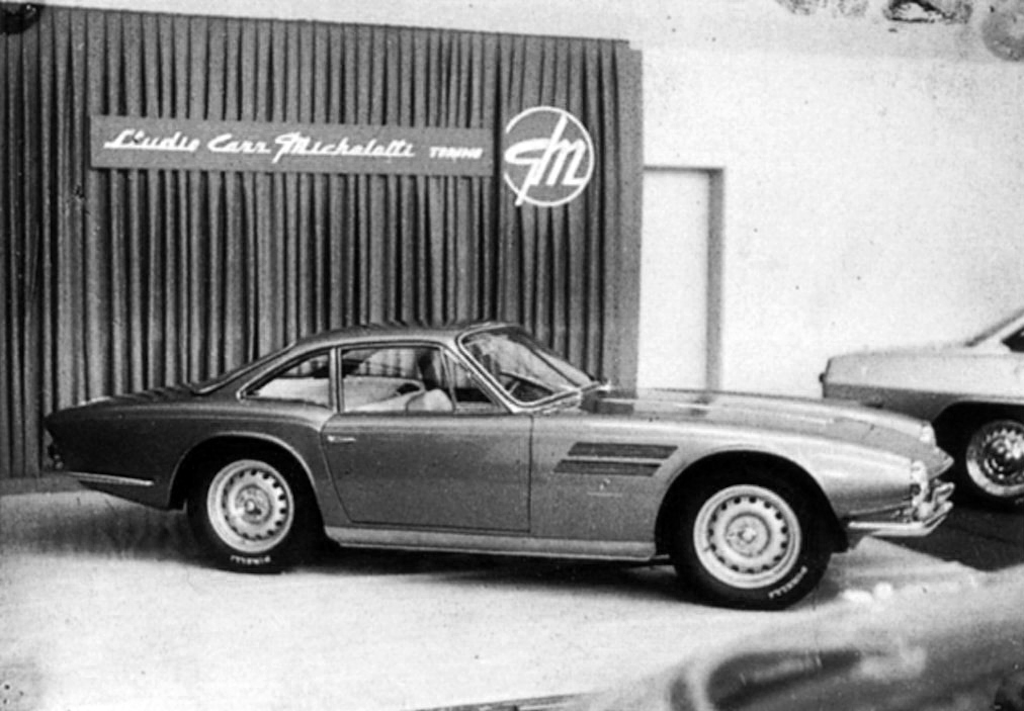
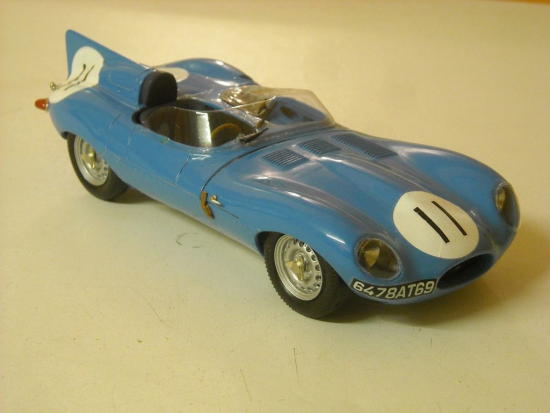
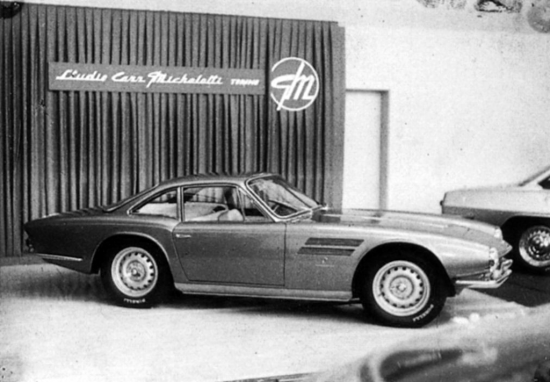
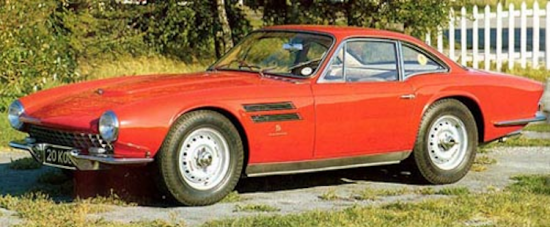
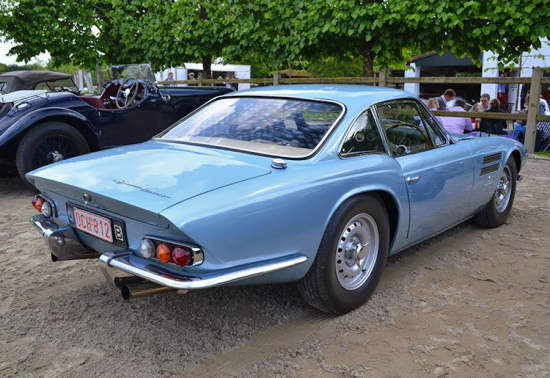
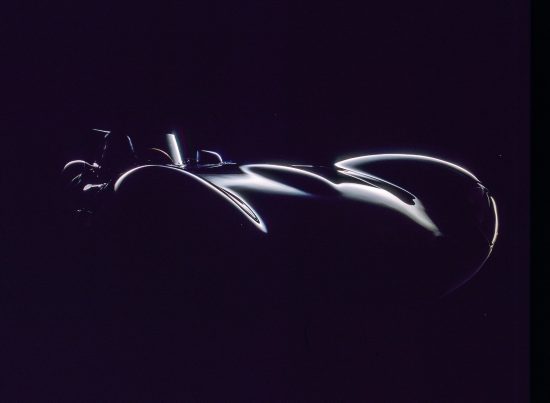
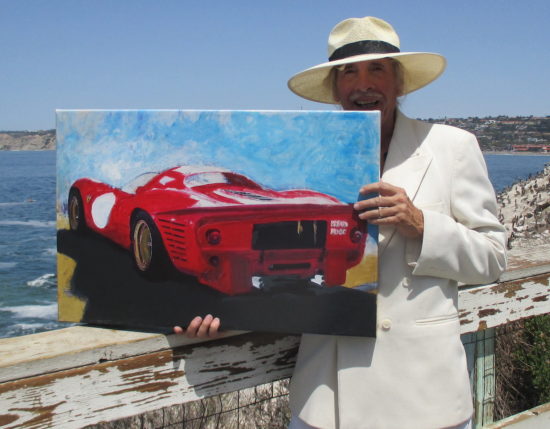

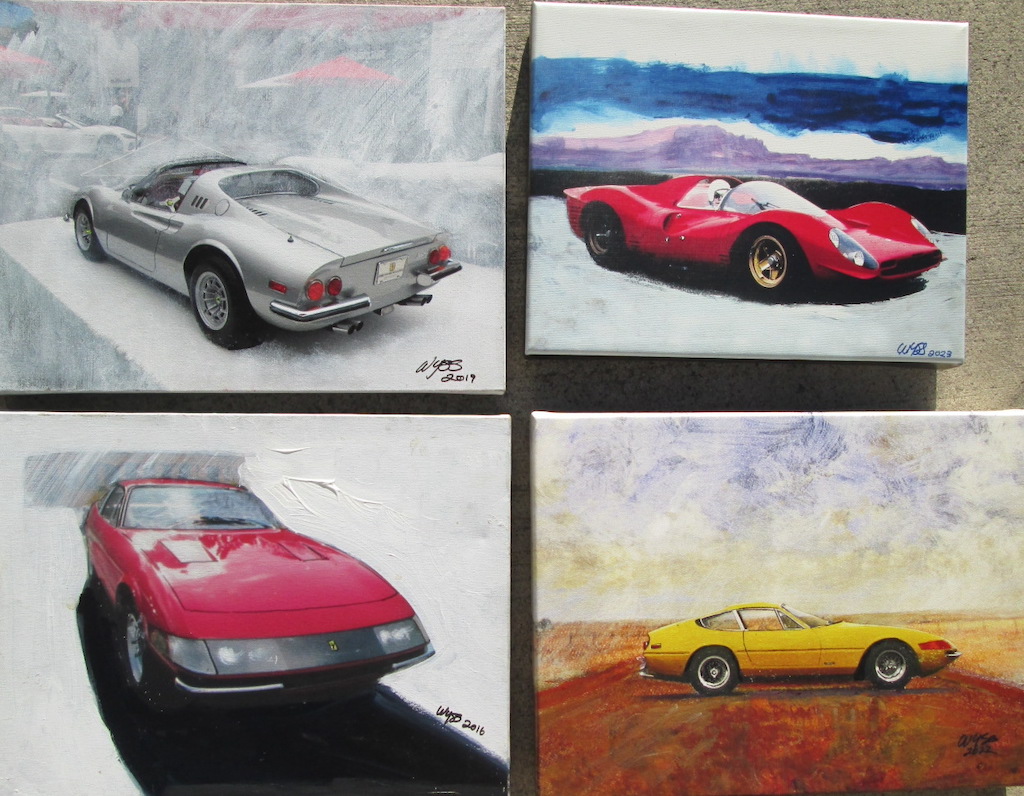

What a great story. The Michelotti designed body is beautiful. I’m glad it was saved and lives on clothing an E-Type chassis. Michelotti was pretty prolific, doing some nice work for Triumph in the day. He was responsible for the design of the Stag, of which I owned two of at different times (one terrible and one wonderful). Peter Giddings who is mentioned in the article was a Bay Area TV weatherman and car enthusiast.
Thank you for turning me on to another great Italian designer. I googled Michelotti’s cars and found a Ferrari 330 gt that looks very Iso Grifo, and Fiat Dino like from the front. Also I found a red BMW 3200 that is unbelievably beautiful. Italian designers like Michelotti’s, Giugiaro, etc., were true artists comparable to the greats of the renaissance.
So many cars, so little money.
The red BMW 3200 is nothing more than the Michelotti design for the BMW 507, another design came from Loewy, but the most erotic one is the Görtz one…
I photographed Bill’s D Type in his Sears Point garage. My assistant and I drove from my Culver City studio in the studio van loaded with equipment to turn Bill’s garage into a studio.
As I remember the story Bill had just traded his TR250 silver with a red stripe to Bob Baker. Bill had in his garage this D-Type a Lotus Eleven S2 and a Lister Chevy. All taken in trade on the TR250. I believe the TR250 is now owned by Lawrence Stroll of Canada.
The D-Type was a very deep blue and in nice condition as you would expect any car from Bob Baker to be.
Side story. Chizar had the original engine from the TR250 in his living room with a glass sheet placed on top and used it as a coffee table. He also had a big block Chrysler he used as a coffee table.
Just thought I might add to your collection of stories.
I have attempted to add one of the images to this comment.
Ciao
Dennis
Dennis Gray Photographer
415.269.5419
dennisgray711@me.com
DennisGrayPhotographer.com
Staff photographer Sportscardigest.com
I posted an Update with a photo of this D-Type by Dennis Gray.
its a very good american owner and american auction propaganda story with as much strength as boiling chocolate.
in uk we would see through all this.
having spent many a time on track and auctions worldwide with americans and others convincing themselves of their own nonsense. this i major league nonsense.
i have been very kind not to use language suitable for this story.
so a car smashes..nothing left of it..scrapped in lemans…the factory not wanting to take it away to hide or crush..are you people real or is the needle still sticking out of your arm..
and a few years later…a top coachbuilder comes along looking for a racing car not to race but make a body..with a dead body or parts still inside the remains…oh it gets better..
and the more owners the better the story so in the end people forget its all nonsense..the whole lot.
shame on the people.
The car was not the factory’s to decide on. It is not a unique story in that the fanily kept the wreck for emosional reasons or simply not having the strength to cope with decision on what to do with the wreck. Simple solution is just stash it away. That Michelotti used the nechanicals later was well known at the time. That the value of those bits were later reclothed was also well publicised at the time of the rebuild, even in UK mags.
Only five years later I notice Mark’s nasty letter. i looked up the picture of the car after the crash. The bonnet is smashed but the rest of the car looks remarkably intact , far from your description of “nothing left of it”
If you want to see the picture go to
Photographers Purchasing Flagging Revs Institute Cart
The wreck of Number 11 – André Guelfi/’Mary’ (Jean-Marie Brussin)’s Henri Peignaux-entered Jaguar D-Type chassis ‘XKD513′ – in the Dunlop Curve. Brussin died in the accident.
24 Hours of Le Mans
Title 24 Hours of Le Mans
Source Albert R. Bochroch Photograph Collection
Description The wreck of Number 11 – André Guelfi/’Mary’ (Jean-Marie Brussin)’s Henri Peignaux-entered Jaguar D-Type chassis ‘XKD513’ – in the Dunlop Curve. Brussin died in the accident.
Years 1958
Date 1958-06-22
Photographer Albert R. Bochroch
City Le Mans
Country France
People Guelfi, Andre Brussin, Jean-Marie
Marque Jaguar
Model Jaguar D-Type
Event 24 Hours of Le Mans
I suspect y0our bitterness is because you missed a similar classic clothed with a non original body and only realized it when the opportunity was gone.
The Peter Giddings mentioned in the article was not the Pete Giddings who was a Bay Area weatherman.
Peter Giddings spent about 40 years of his life marketing around to world for Clear-Com and was a major contributor to its success.
In his spare time and after his retirement he was a full time vintage racer with quite a collection of significant vintage race cars-many Alfas and a drop dead gorgeous Maserati 250F.
I had the pleasure of meeting Peter at Lime Rock Park in Connecticut, USA , some years ago and watched him race his cars there for many years until his death in 2019.
He personified the term Gentleman.
Thank you for the clarification on Peter Giddings. My bad! I know that Peter Giddings, the weatherman, was also a car enthusiast, and involved in the Bay Area and other car communities. I appreciate you pointing this out as my assumption was incorrect.
Not a problem Rob.
If I hadn’t met the guy and appreciated him as a racer and gentleman, it wouldn’t have made any difference to me.
Best,
Steve Schefbauer
And now I see this years after it was originally published! To Mr. Mark, the disgruntled Englishman:
If you’ll be so kind as to look at page 166 of Lord Montague’s (another Englishman) book JAGUAR, you’ll find a large black and white photo of the Michelotti D-Type, displayed at the 1963 Geneva Auto Show. So, it is NOT major league nonsense. You Brits are just as concerned with “provenance” as Americans or, for that matter, any dedicated enthusiasts around the world. (Actually, “thoroughbred” is a word used extensively in your motor pubs to describe a proper car. A little snobbish, wouldn’t you say?)
It’s just a good thing there are enthusiasts willing to keep a rare race car going — in whatever guise — for future generations to appreciate. And remember that the likes of Enzo Ferrari and Colin Chapman would stoop to rebody an existing– usually wrecked — race car chassis, give it a new chassis number, and then sell it as “new,” thus making it difficult to trace the car’s heritage.
So, get off your high horse!
books and photos and if you tell it too many times over too many years you start to believe the nonesense yourself.
the modern AC people who use the name..advise they have heritage and use the original AC BUCKS (wooden body formers) to build their bodies.. erm no..in the day when 4 staff left and they where clearing the factory. there was no money for heat in the factory..ginger and ron wray chipped the well used worn out bucks to heat the factory..60 years later..they emerage from the ashes..
i engineered a birdcage Maserati..one weekend an american turned up with a chassis number same as a Scandinavian car. we knew the correct one. but you could not tell the other was so good..sold by a uk top auction house with total provenance to people who want to hear the nonsense.
you buy books and look at photos.. marvellous.
bernie has just sold some of his racing cars..he likes a deal..do some reasearch on LANDHURST LEASING in the 1980,s where classic racing cars where gold bar investments.. i was part of the team that collected most of them for the banks and there where more connaught f1 cars repossed that where actually made..more lotus 18 and several others sold to people who like to read provenance ..they where all in on it..bernie..sterling. gurney, lots more making big books out of fools who read books and look for provenance. and it is still happening today and tomorrow. the lost car..with provenance from the first day.. DEAD MEN DONT SPEAK.
In regard to The AC folks, you may be misinformed about the wooden bucks. AC Heritage/Brooklands Motor Company (Steve Gray) is the custodian of the original body bucks which apparently survived the discontinuance of making the AC/Shelby Cobras in the 60’s, particularly the small block cars (the 260 and 289 cars). He also has the original body bucks for the Ace as well. I have seen numerous photos over the years of the bucks online at AC Heritage as well as from fellow AC owners who have been to Brooklands and also to the AC factory during the Brian Angliss era and have sent me their personal photos and videos as well. Though Mr. Angliss was making the Mk. IV Cobras in the 80’s through the mid 90’s, he also produced replacement panels for the early small block cars. In any event, I know the small block bucks survived and it has been questioned about the 427 bucks, though per period articles, brochures and books describe that the bucks and jigs survived.
The Michelotti D-Type was well known all the time, and there has only been one example all the time. Michelott’s son has old photos/drawings etc.. The case on how Michelotti bought the wreck from the family of the deceased iwas also well known at the time. It is valuable as a Michelotti one-off, but not wildly so. It would not be worth it faking it. When the body was languishing at Lynx it was not particularly valuable at all. Hence rebuilt using at the time dirt cheap E-Type mechanicals ca. 1980. Again well documented at the time.
The first “series” of suspect classics were the Bugattis where one car would result in three ringers. But they were valuable early on. (It was known at the time who were behild ost of these.) This car was not in that league at all.
Mr Mark has obviously been reading too much Shakespeare over the decades !